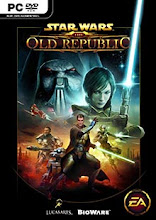You'd think I'd learn.
On a whim, I decided to give Calpurnia Tate a chance. I'm glad I did. Inside, I found an engrossing book about a young girl growing up in central Texas more than one hundred years ago. I love historical fiction and Calpurnia Tate does an exceptional job of painting a picture of what life must have been like in turn-of-the-20th century Texas.
Each chapter of the book begins with a quote from Charles Darwin's The Origin of Species and depicts one in a series of typical events in the life of Calpurnia Tate, the book's main character. Calpurnia is eleven years old, the only daughter of a family of six boys! She lives on a pecan farm not far from Austin and loves more than anything to spend time with her grandfather exploring the countryside studying the local flora and fauna.
What Calpurnia doesn't enjoy doing is everything expected of a girl growing up in 19th century Texas: sewing, cooking, knitting, piano playing, and behaving like a lady. Calpurnia struggles with the weight of these expectations throughout the entire book because deep down she knows she wants nothing more than to go to college and become a natural scientist, a life-long dream that runs counter to her mother and the community in general.
In the middle of Calpurnia's struggle to be a scientist instead of a housewife, Jacqueline Kelly masterfully describes life in the post-Civil War era. One of my favorite chapters entitled "Thanksgiving" tells the story of how Calpurnia's little brother Travis gets the responsibility of caring for the family's three turkeys, all destined for the holiday plate. Travis, a softy for all critters, wastes no time naming all three turkeys and they soon become his very own pets to the point where the turkey trio come running up to greet him whenever he approaches. When Travis discovers the family means to eat the turkeys come Thanksgiving, he does everything he can to "accidentally" allow the birds to escape. It's a hilarious and insightful chapter, but not one that ends happily for Reggie, Tom Turkey, and Lavania.
In some ways, the book's series of anecdotal stories reminds me of the 70s show Little House on the Praire. Calpurnia Tate bears a passing resemblance to the spunky Laura Ingalls. However, Calpurnia Tate is not nearly as full of homespun goodness as Little House. Unlike the TV show, which very often preached a moral code, Calpurnia Tate very much feels like a real person growing up in a unique period of U.S. history.
As you can tell by now, I highly recommend the book. It's smartly written, contains interesting, admirable characters, and is an invaluable prism for gazing into life in Texas a century ago, and yet another example of giving a book a try despite its butterfly girl cover.




No comments:
Post a Comment